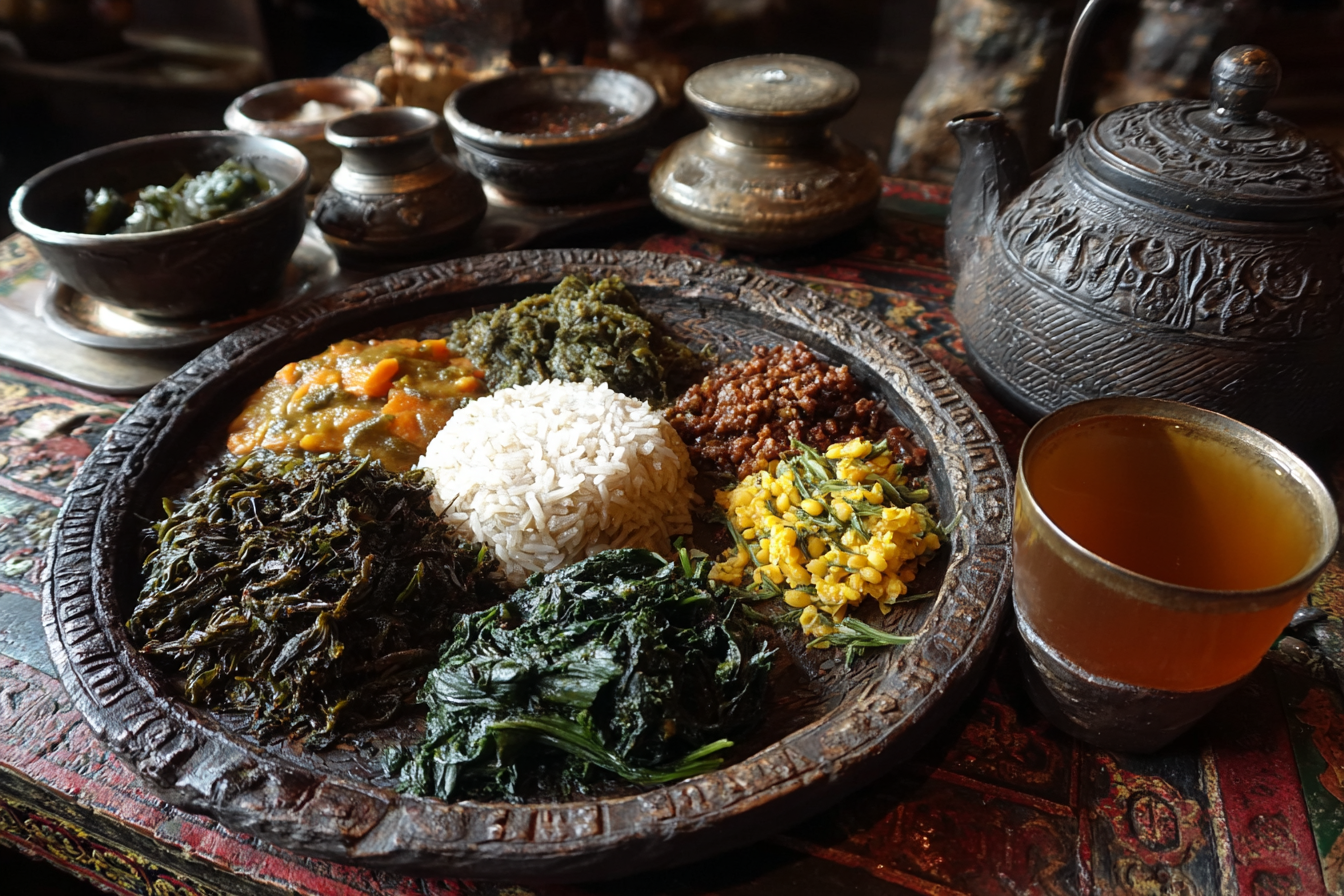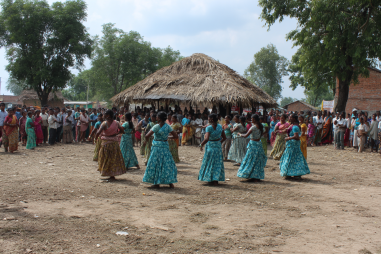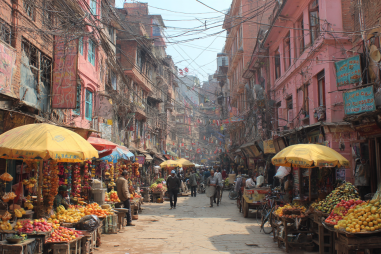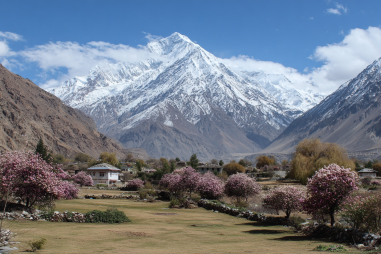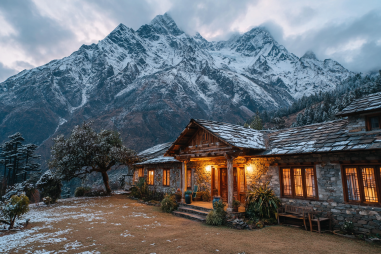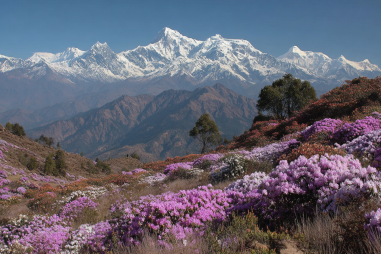Embarking on the Everest Base Camp trek is an incredible adventure that challenges not only your physical endurance but also your ability to maintain proper nutrition in a demanding environment. High altitudes, long walking days, and limited resources can make planning your meals a critical part of your success and enjoyment on the trail. Fortunately, the teahouses and lodges along the route offer a diverse range of local and international foods designed to keep trekkers fueled and energized. In this guide, we’ll explore what you can expect to eat, how to meet your nutritional needs, and tips on staying healthy and satisfied from the start of your trek to reaching Base Camp.
Typical Meals Served Along the Trek
The teahouses scattered throughout the Everest Base Camp trail vary in size and modern conveniences but usually provide a comprehensive menu tailored for trekkers. Expect meals that are simple yet hearty, designed to replenish your energy after long days on the trail.
Breakfast options typically include:
- Porridge or oatmeal topped with nuts and dried fruit
- Eggs prepared in various ways—boiled, scrambled, or as an omelet
- Breads such as toast or traditional Tibetan options like tingmo (steamed bread)
- Mocha or butter tea, a local staple for warmth and calories
- Coffee and hot chocolate for a comforting start
Lunch often features warming soups or simple noodle and rice dishes—great for refueling quickly. Popular selections include:
- Soups such as vegetable, lentil, or chicken noodle
- Dal bhat, a classic Nepali dish of rice with lentil soup and side vegetables
- Momos (Tibetan dumplings) filled with vegetables, chicken, or yak meat
Dinner is usually a heartier affair with a choice of rice or noodles accompanied by curries, stir-fries, or stews. This meal helps restore energy and keep you warm through the cold nights.
Nutritional Requirements for High-Altitude Trekking
Nutrition becomes critical at high altitude where your body requires more energy to perform basic functions and combat the cold. The increased breathing rate and physical exertion mean that your metabolism is running at an accelerated pace, requiring more calories—between 3,000 to 5,000 calories a day depending on your activity level.
Key nutritional priorities include:
- Carbohydrates: Your main energy source, essential for stamina and combating fatigue.
- Proteins: Help repair muscles and maintain immune function, important on challenging treks.
- Fats: Provide dense calories and assist in keeping you warm.
- Vitamins and Minerals: Vital for immunity and overall health, especially iron, calcium, and vitamins C and D.
Balancing these macronutrients at every meal will help maintain stable energy levels and support your body’s increased demands on the trek.
Local Dishes to Try and Their Ingredients
The Everest region offers a flavorful array of local dishes influenced by Tibetan and Nepali cuisines. Trying these traditional foods adds a cultural dimension to your trekking experience while providing familiar nourishment essentials.
- Momos: Steamed or fried dumplings filled with vegetables, chicken, or yak meat. Served with spicy tomato-based dipping sauce.
- Dal Bhat: The staple Nepali meal consisting of steamed rice (bhat) served with lentil soup (dal), sautéed vegetables, and sometimes meat or pickles.
- Thukpa: A hearty noodle soup loaded with vegetables and meat—perfect for warming up after a cold day.
- Butter Tea (Po Cha): Traditional Tibetan tea brewed with tea leaves, yak butter, salt, and sometimes milk. It’s very high in calories, making it ideal for cold weather.
- Tsampa: Roasted barley flour often eaten mixed with butter tea or water, providing quick energy.
These dishes use simple, locally-sourced ingredients such as barley, lentils, potatoes, yak or chicken meat, and fresh vegetables when available.
Tips for Vegetarians and Special Diets
Vegetarians and those with specific dietary needs can still enjoy the trek without feeling limited. Many teahouses are familiar with vegetarian requests and have a variety of options available.
- Vegetarian Dal Bhat: Often served with seasonal vegetables and lentils, making it a perfect balanced meal.
- Vegetable Momos: Easily ordered without meat, and can be steamed or fried.
- Egg-based Dishes: For lacto-ovo vegetarians, various egg dishes like omelets or boiled eggs can provide necessary protein.
- Request Adjustments: Be sure to communicate your dietary needs clearly; many teahouses will accommodate gluten-free or vegan diets, though options might be more limited.
- Bring Supplements: Vegetarians may want to carry protein powders or energy bars to supplement protein intake on harder trekking days.
Staying Hydrated and Snacking Options
Hydration is crucial on the Everest Base Camp trek because higher altitudes increase fluid loss. Dehydration can exacerbate altitude sickness symptoms and drain your energy, so drinking plenty of fluids throughout the day is essential.
Many trekkers rely on drinking boiled or purified water, herbal teas, and electrolyte drinks offered at teahouses. Avoid excessive caffeine or alcohol, which can dehydrate you.
Snacking between meals helps keep your blood sugar steady and gives quick bursts of energy during climbs:
- Energy bars and trail mix with nuts, dried fruits, and seeds
- Chocolate or candy for quick glucose
- Fresh fruits like apples or oranges when in season
- Local snacks such as roasted barley or biscuits commonly found along the trail
Food Safety and Hygiene Considerations
Food safety is always a concern when trekking in remote areas. To avoid stomach problems, observe some basic precautions:
- Eat at reputable teahouses known for cleanliness.
- Avoid raw vegetables or salads that may be washed in untreated water.
- Choose cooked foods that are served hot and freshly prepared.
- Drink only filtered, boiled, or bottled water. Use water purification tablets or filters if carrying your own supply.
- Wash hands frequently with soap and water or use hand sanitizer before eating.
Maintaining these hygiene standards will help prevent common gastrointestinal troubles during your trek.
Bringing Your Own Supplements and Snacks
While the teahouses provide a variety of meals, it’s always wise to carry your own supplemental foods and vitamins to ensure you meet your nutritional needs.
- High-energy snacks like protein bars, nuts, dried fruits, and chocolate
- Multivitamins to support immune function and replenish nutrients
- Electrolyte powders or rehydration salts to mix with your water
- Specialty items if you have dietary restrictions or prefer specific brands
These items can be a lifesaver during long, strenuous days or in case you experience appetite loss due to altitude effects.
Fueling Your Trek the Right Way
Proper nutrition and hydration play a fundamental role in how well you perform and enjoy your Everest Base Camp adventure. The path is demanding, but with the rich variety of local dishes and international staples available, along with some smart planning for supplements and snacks, you can maintain your strength and morale throughout.
Listen to your body’s needs, eat balanced meals rich in carbohydrates, protein, and fats, and keep hydrated at all times. Appreciating and savoring the unique culinary culture of the Sherpa and Nepali people along your journey will add a delicious layer to your trekking memories. With the right food strategy, you’ll be fueled for success as you conquer one of the world’s most iconic trails.

